If you’ve ever watched a group of scuba divers struggling down the beach in all their heavy equipment, you might have wondered if they’re going to sink like stones and never come back.
But of course, they do return, and when you see videos of their underwater adventures, it often looks like they’re floating effortlessly, as if they’re entirely weightless.
If how this works is a mystery to you, let us take you through the ups and downs of scuba diving.
We’re going to look at the wonders of the art of scuba buoyancy to see that sinking and floating is a combination of the right amount of lead weights, an inflatable buoyancy compensator (BCD), and some finely controlled breathing underwater.
- How Do Scuba Divers Sink?
- What Causes a Scuba Diver to Sink?
- Can Scuba Divers Control How Fast They Sink?
- Why Is It That Divers Are Not Sinking Continuously?
- Can Divers Sink Uncontrollably?
- How Can Scuba Divers Float Neutrally Underwater?
- How Do Scuba Divers Ascend?
- How Do Scuba Divers Know How Fast They Are Sinking or Ascending?
- Is It Hard to Learn Buoyancy Control?
- Do Scuba Tanks Float or Sink?
- Do You Float With Scuba Gear On?
- Conclusion
- You Might Also Like…
Disclosure: this post contains affiliate links (clearly marked with ), which means we may earn a commission if you buy something through them, at no additional cost to you.
How Do Scuba Divers Sink?
Whether they’re in freshwater or saltwater, a scuba diver sinks from the surface by becoming “heavy,” which we call “negatively buoyant.”
Buoyancy in water (how much something floats or sinks) has three states:
- Positively Buoyant – Floating high at the surface or rising upwards underwater.
- Negatively Buoyant – Sinking.
- Neutrally Buoyant – Neither sinking or rising up underwater.
Positive and negative buoyancy effectively don’t have any limits, so a diver can be highly positive or negative, as we will see later.
At the start of a dive, either before they walk into the water or they jump off the boat, a sensible scuba diver will fill their BCD with air to make themselves positively buoyant to float safely at the surface.
The BCD is a jacket or harness that the diver wears as part of their scuba unit, including the tank and regulator.
The BCD can be inflated with air from the diver’s tank or deflated in a controlled way to change the diver’s buoyancy.
The BCD is generally called the “Buoyancy Control Device.”
Still, we prefer the “Buoyancy Compensator” because it is used to compensate for changes or a state of buoyancy, whether they’re under the water or at the surface.
This is a subtle difference in name, but generally, it helps beginner divers better understand what is happening to their buoyancy underwater and how to manage (or compensate) for it.
So at the surface, with the BCD filled, the scuba diver will need to let this air out to change their buoyancy from positive to negative so that they can start to sink or descend.
Student divers are taught a multi-part descent procedure to ensure that they don’t miss any of the essential steps to leave the surface safely.
What Causes a Scuba Diver to Sink?
As we’ve seen, a diver needs to let the air out of their BCD to lose the positive buoyancy that was keeping them at the surface.
However, this alone does not cause them to sink.
A typical diver will be wearing an exposure suit of some kind, either a wetsuit or a drysuit.
Both of these suit types are significantly positively buoyant themselves, so letting the air out of the BCD alone won’t be sufficient.
This is why scuba divers wear lead weights.
The weights make the diver sufficiently negative to leave the surface once the BCD has been emptied.
Weights are often worn on a belt, a harness, or in the BCD in integrated weight pockets.
All weight systems have a quick release of some kind to be dropped rapidly in an emergency.
How much weight exactly is needed depends on several factors:
- Diving in Salt or Freshwater – Saltwater is denser (more supportive) than freshwater, and so divers need more weights to descend.
- The Thickness of Wetsuit – The thicker the neoprene, the more weight will be required.
- Wearing a Drysuit – A drysuit typically needs more weight than a wetsuit to overcome the large volume of air that’s inside.
- Body Composition – Different body compositions will make a person more or less buoyant.
- Experience – To a limit, more experienced and relaxed scuba divers generally need less weight than the equivalent beginner.
Divers learn to roughly work out how much weight they will need and then carry out a weight-check procedure to ensure they have the correct amount.
By necessity, this procedure is carried out at the start of the dive to ensure that the diver has sufficient weight to sink, but not so much as to be significantly overweight.
However, to properly check correct weighting for future dives, the check should be repeated at the end of the dive when the diver’s tank is at around 500 psi / 50 bar to consider the weight lost from the air that has been used during the dive.
Even without an exposure suit of any kind, most divers will still need a few pounds of lead so that they can sink comfortably to begin their dive and hold their safety stop at the end.
Divers need to repeat the weight-check whenever they’ve changed equipment or dive location conditions.
Can Scuba Divers Control How Fast They Sink?
Once the diver has left the surface and started to descend, they need to manage their buoyancy to control how fast they sink.
As they descend, the surrounding water pressure increases, compressing their exposure suit and any air left inside the BCD.
As the suit and the air is compressed, the diver will lose buoyancy and become heavier or more negative.
The diver adds small amounts of air with the BCD inflator to compensate for these changes and control their descent and how fast they sink.
Why Is It That Divers Are Not Sinking Continuously?
By adding air into the BCD as they descend and adding to their buoyancy, a scuba diver controls how quickly they sink.
If needed, they can also kick up gently to slow or stop their descent, for example, if they are having problems equalizing their ears.
They also need to make sure that they maintain contact with their buddy if they are descending a bit more slowly.
Can Divers Sink Uncontrollably?
Without adding air into the BCD to compensate for the compression of their exposure suit, there will come a point where a scuba diver becomes so negative from the weights they are carrying that even with vigorous kicking, they still sink.
At this point, they will start to sink uncontrollably until they eventually crash into the bottom.
How Can Scuba Divers Float Neutrally Underwater?
Floating neutrally without rising or falling is a combination of using the BCD correctly combined with breathing techniques.
Once the diver has reached the depth they want to be at, they need to carefully add more air into the BCD so that they are neither sinking or floating as they swim.
When the diver has reached something close to neutral buoyancy, they can breathe normally and will, with practice, remain at the same depth.
This is often called hovering and is often practiced by beginners in “Buddha” like positions.
If they descend deeper, they’ll need to add some more air to the BCD, and if they ascend a little bit, they’ll need to let some air out to compensate for the surrounding reducing pressure.
Once settled, divers can make fine controls of around 3 feet / 1m change in depth by adjusting the way they breathe.
While scuba divers must never hold their breath, they can vary breathing for buoyancy control.
By taking a larger breath in, they will rise a little in the water.
By taking a full, deep breath out, they will fall in the water.
With practice, this breathing technique allows for excellent fine buoyancy control.
How Do Scuba Divers Ascend?
When it’s time to ascend, divers will begin to kick to swim upwards.
As they rise, the air in their BCD and their exposure suit will expand due to the surrounding water pressure reducing.
The more the suit and BCD air expand, the more positively buoyant the diver will become and the faster they will rise.
If this isn’t controlled, then the diver will start to rise rapidly, even without kicking, and soon reach the point where they will be ascending at a dangerously fast speed.
To control their ascent, divers need to let the air out of their BCD in small amounts to compensate for their increasing buoyancy.
By letting air out in a controlled way, it’s possible to ascend slowly with just gentle kicking to control speed until the depth is reached to make the safety stop.
After the safety stop is finished, the diver will slowly swim upwards, maintaining control by letting out air until they reach the surface.
At that point, they will fill their BCD, so they are entirely positively buoyant.
It is essential to note that divers must not inflate their BCD underwater to go up.
This can easily lead to a rapid, uncontrolled ascent that can be extremely dangerous.
How Do Scuba Divers Know How Fast They Are Sinking or Ascending?
Descents
There isn’t a maximum descent rate that scuba divers must follow.
However, it is crucial to:
- remain in control
- be aware of the surroundings
- equalize your ears and other air spaces, and
- stay in contact with your buddy.
Diver computers and depth gauges can monitor how deep divers are and how quickly they are descending.
It’s also possible to use visual indicators to have a rough guide.
For example, typically, the deeper you go, the darker it gets, so if it’s getting dark quickly, you know you’re going down fast.
Divers can also use visual references like a reef wall or descent rope to gauge their speed.
If it’s rushing past, then you can be sure you are descending quickly.
But the clearest indicator for most divers is how often they have to equalize and how hard it is to do so.
If you have to equalize very often, or it is difficult, and you’re even feeling discomfort, then you can be sure that you are descending too quickly.
Remember to keep a watch on your buddy too.
Just because you’re able to descend rapidly, it doesn’t necessarily mean that they can.
Ascents
The speed at which a diver ascends is essential for their safety, and there are rigid rules that mustn’t be exceeded.
Scuba training agencies, hyperbaric doctors, and computer manufacturers have developed a maximum that divers ascending should not exceed (for example, with the PADI Recreational Dive Planner table, a maximum of 60 feet / 18m per minute).
If a diver uses a dive table to plan and execute their dive, they will need to use a depth gauge and timing device to estimate their ascent rate.
This can be a little bit tricky to do, so the general rule, in this case, is to ascend very slowly and cautiously not to exceed the maximum rate.
Luckily, most divers these days use computers with an ascent rate meter on them, giving a visual and audible alert if the diver is ascending too quickly.
Most computers will sound the alarm if the diver exceeds 30 feet / 10m per minute.
Diver computers will also tell the diver when to pause for their safety stop and will count down the time until it’s time to surface.
When ascending, the diver will also, as on their descent, have visual references that can also be used to gauge how fast they’re going.
Is It Hard to Learn Buoyancy Control?
Buoyancy is a skill that can take some people a lot of practice to get the hang of.
On the other hand, some lucky students can master it right away.
Having the correct amount of weight and positioning it correctly makes a huge difference to how easy buoyancy control is.
Being overweighted often seems like a good idea as it makes leaving the surface easier.
However, the more overweighted you are, the more air you’ll need in your BCD to compensate, and accordingly, the more air you’ll need to control in and out as your buoyancy changes with depth.
Additionally, the position of weights can make buoyancy control harder than necessary.
Students are taught the concept of “trim,” where weights are spread out in different areas for balance, making buoyancy easier to manage.
All that being said, the most significant factor in learning buoyancy control – once weight is correct – is practice.
The more frequently a diver dives and the total number of dives made, the better their buoyancy control will get.
On average, it takes many divers around 50 logged dives to get completely comfortable with buoyancy.
Buoyancy is also a skill that fades, so if it has been a long period between dives, it’s recommended to take a refresher with an instructor to help tune the techniques.
Do Scuba Tanks Float or Sink?
Whether a scuba tank will float or sink depends on the material it’s made from and how much compressed air is inside.
High-pressure scuba tanks are manufactured from either steel or aluminum.
Steel tanks are heavy and will be negatively buoyant and so sink even when empty.
Many divers will use this as an advantage to allow them to carry less weight.
On the other hand, aluminum tanks will sink when they are full but will become lighter and eventually positively buoyant and float as the air is used.
This means that a diver with an aluminum tank needs to carry more weight than a steel tank diver, around 3 to 5 pounds (2 to 4 kg), so that they have enough at the end of the dive when the tank itself is positively buoyant.
To control buoyancy during a dive, even while staying at the same depth, divers will eventually have to let out some air from their BCD to compensate for their tank getting lighter as air is used.
Do You Float With Scuba Gear On?
Whether you’ll float with your scuba gear on will depend on your BCD and how much air is in it.
Assuming that you remembered to put your weight belt on, if you let the air out of the BCD, or enter the water with it empty, then you’ll sink.
Hopefully, you remembered to put your regulator in.
Letting all the air out of the BCD but not sinking is a sure sign that you left your weight belt on the boat.
Conclusion
As we’ve seen, buoyancy control is the skill of controlling sinking and floating, and it needs to be managed both at the surface and during the dive.
It’s possible to float weightlessly underwater and rise and fall subtly with just a change in your breath.
With practice, you’ll be hovering with the best.
You Might Also Like…
-

How Do Scuba Divers Drink Water? 5 Possible Ways (+7 Tips)
-

How Long Can Scuba Divers Stay Underwater? (+9 Limiting Factors)
-

Are Scuba Divers Athletes? All the Facts (+New Competitive Forms)
-
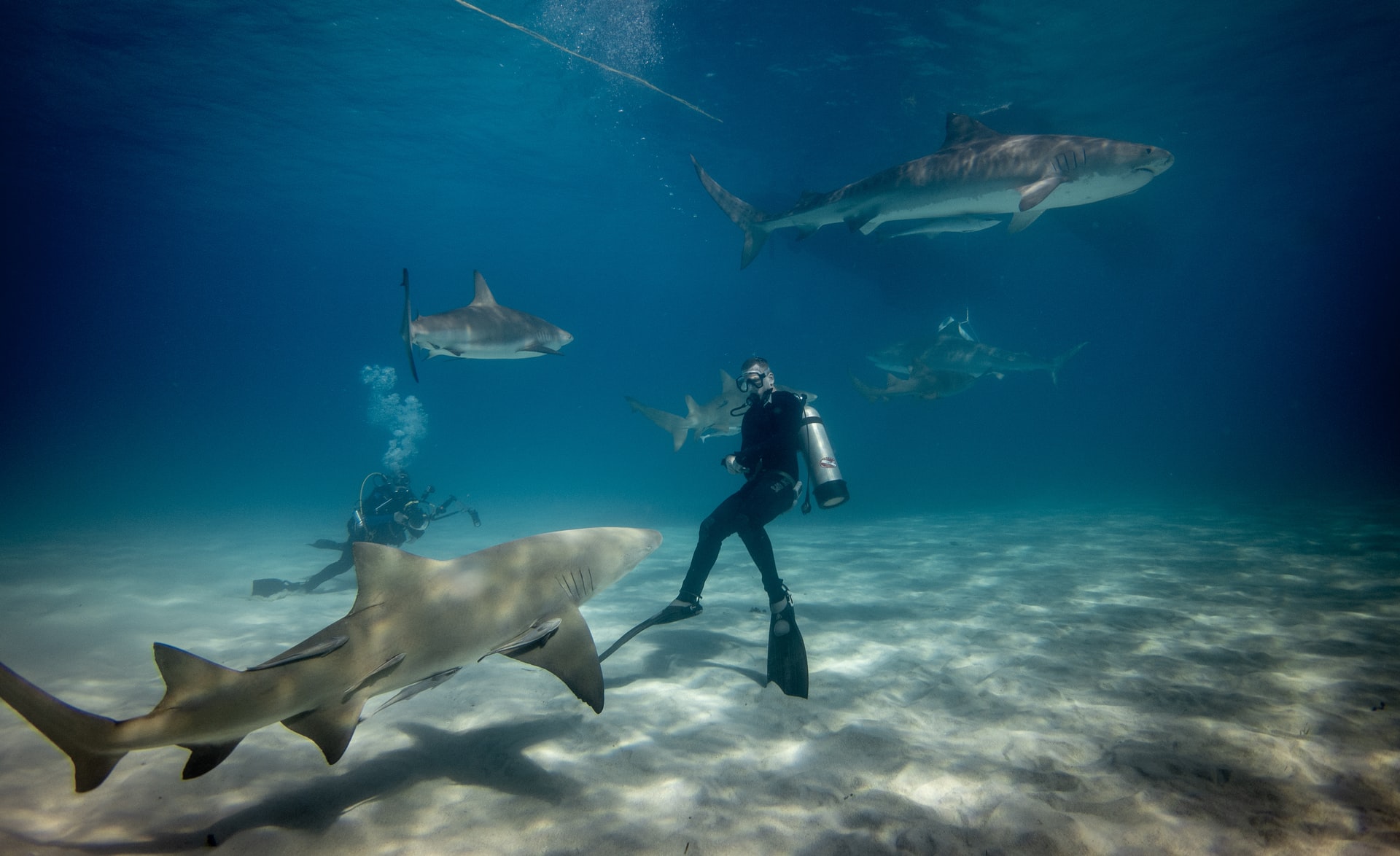
Are Sharks Scared of Scuba Divers? (What Every Diver Must Know)
-
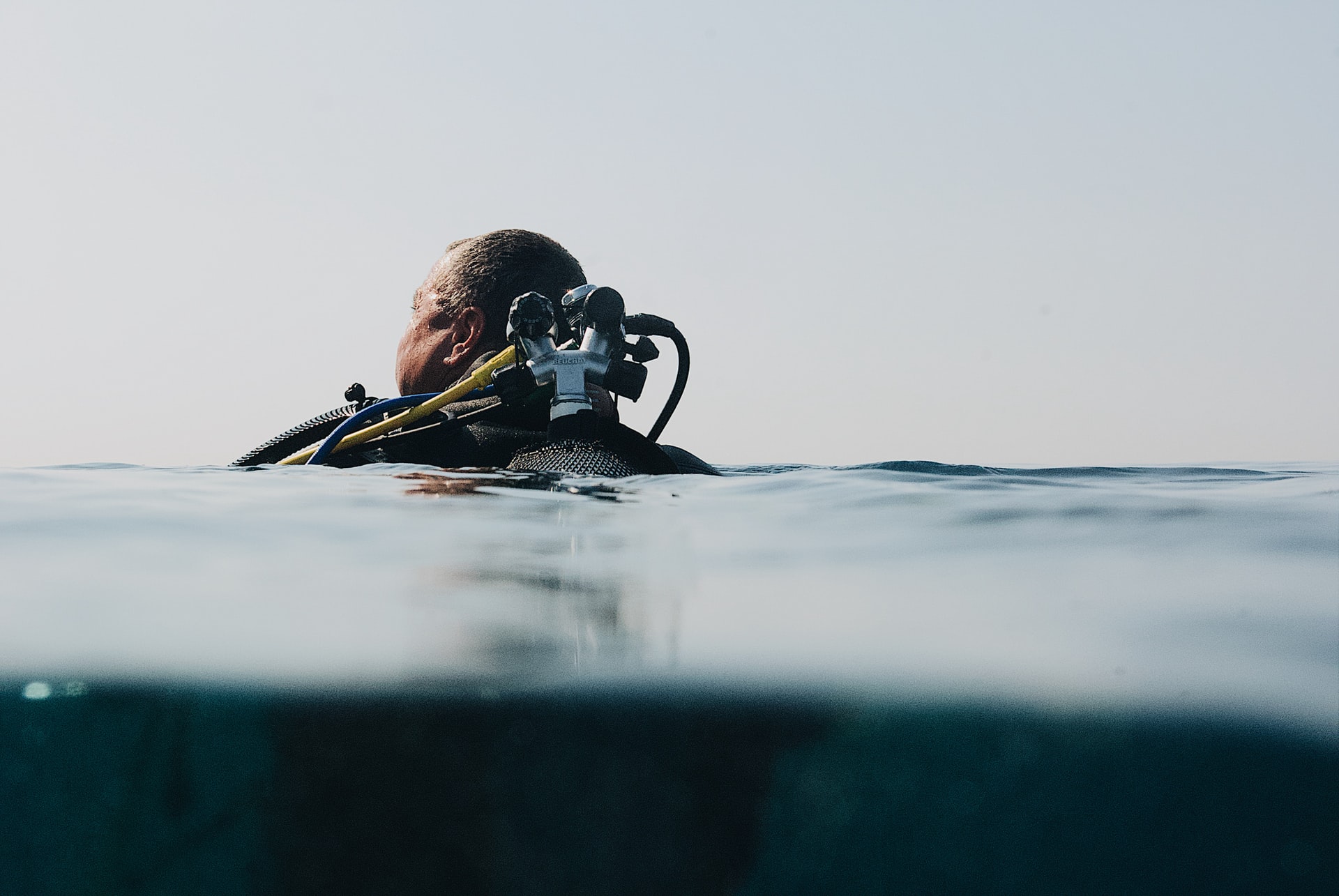
Who Should Not Scuba Dive? 17 Reasons (Every Diver Should Know)
-
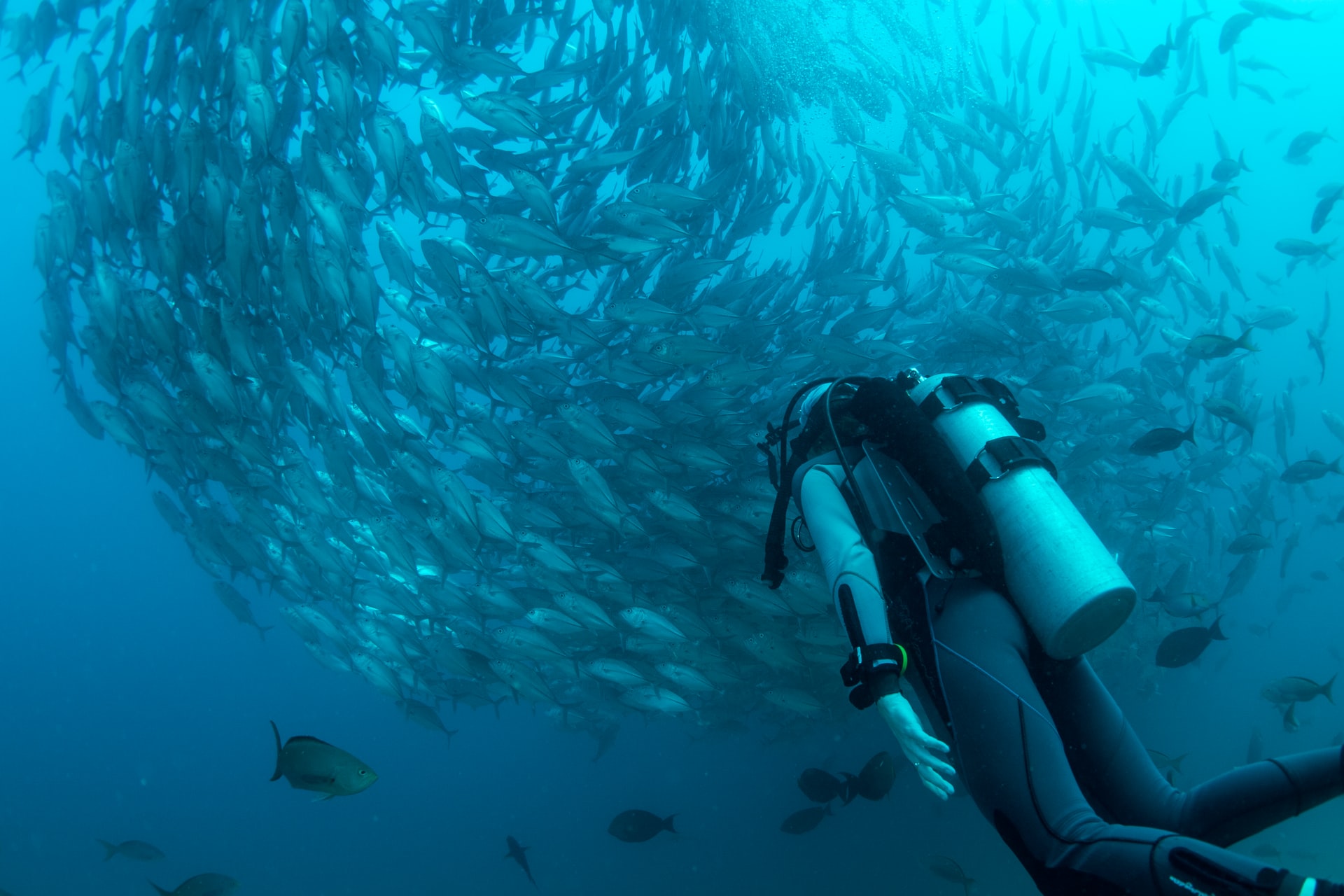
Should I Be Scared of Scuba Diving? 8 Common Fears (Debunked)
-
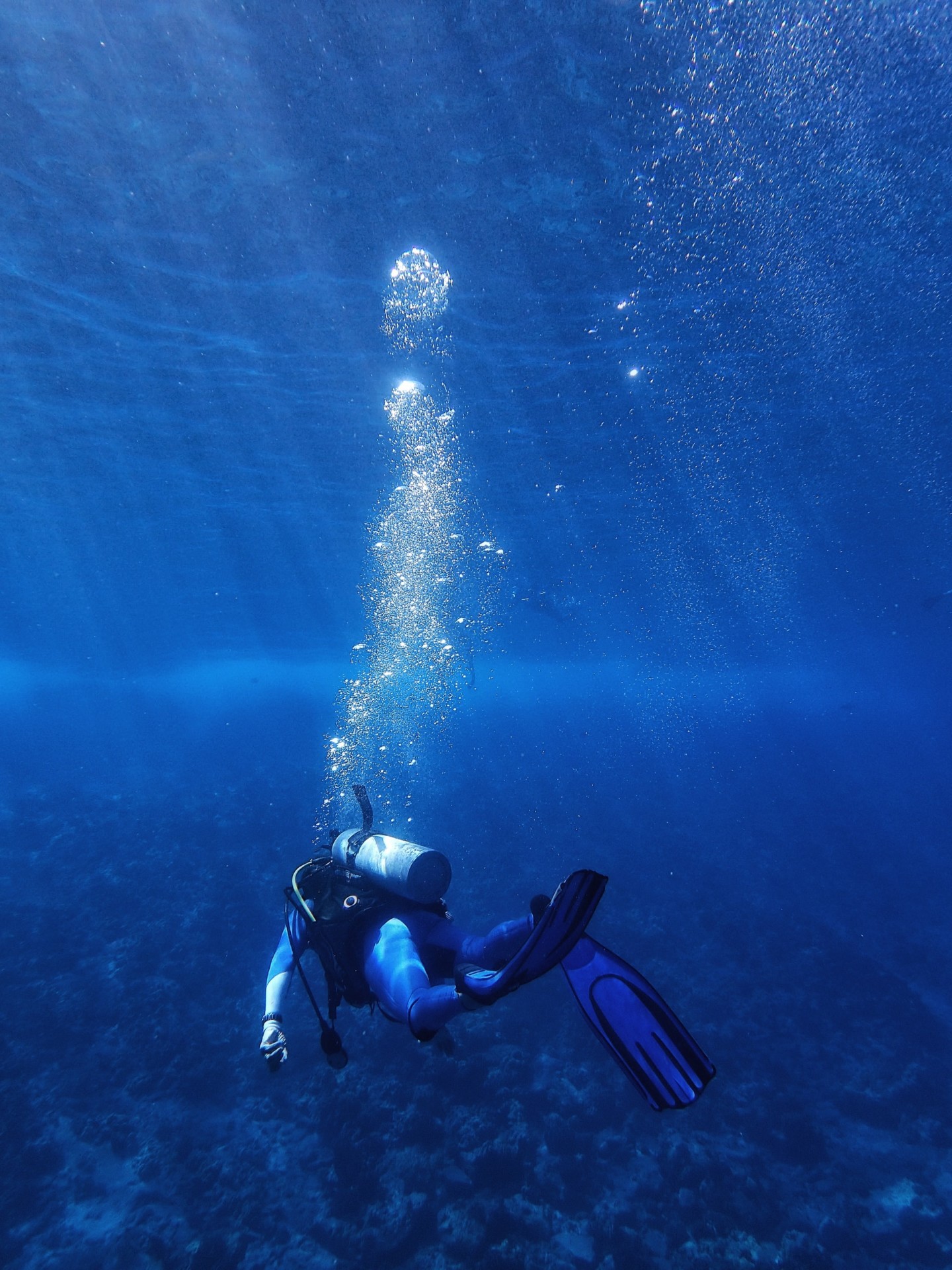
Why Do Scuba Divers Use More Air at Depth? (+4 Practical Tips)
-
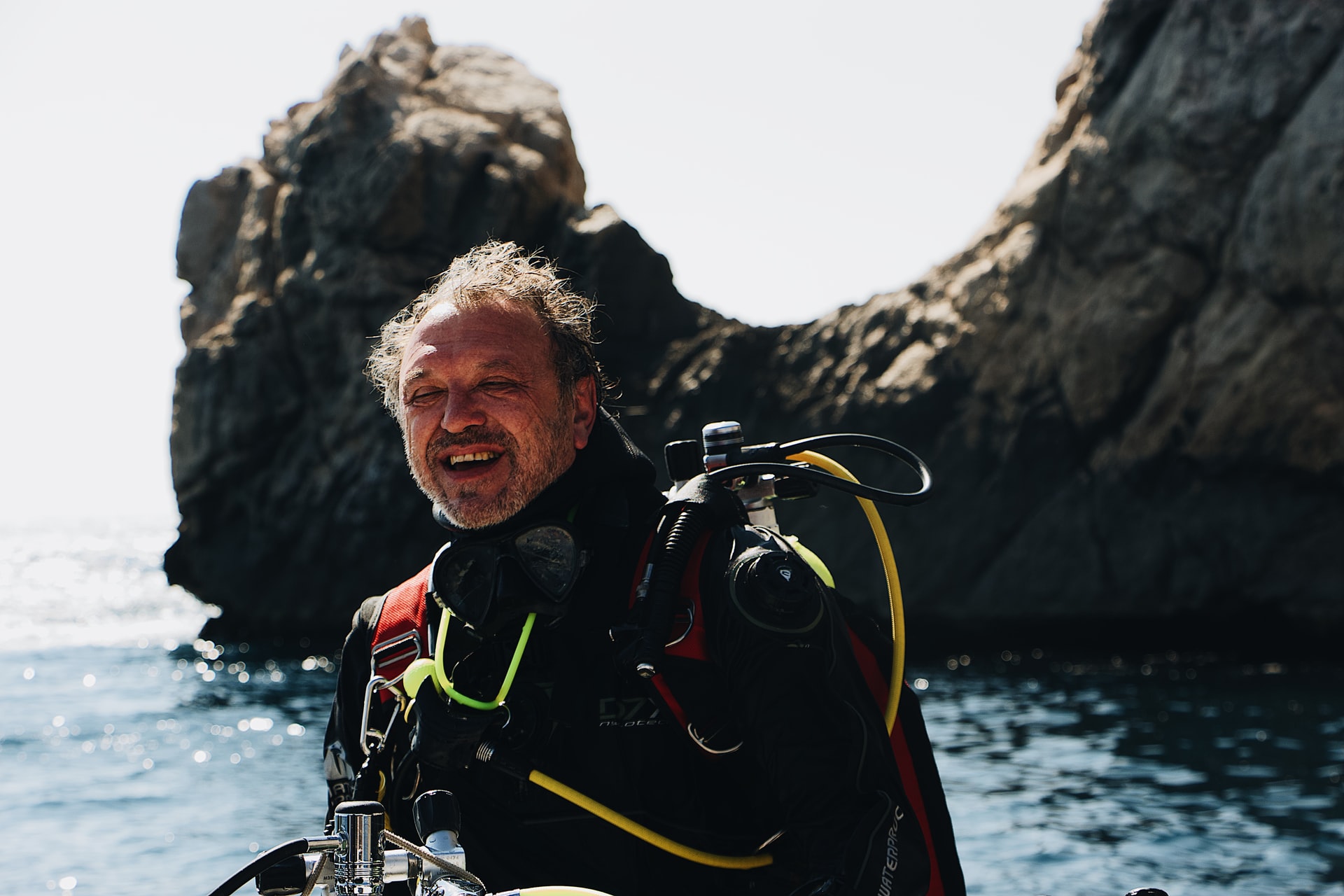
At What Age Should You Stop Scuba Diving? (+9 Tips for Older Divers)
-
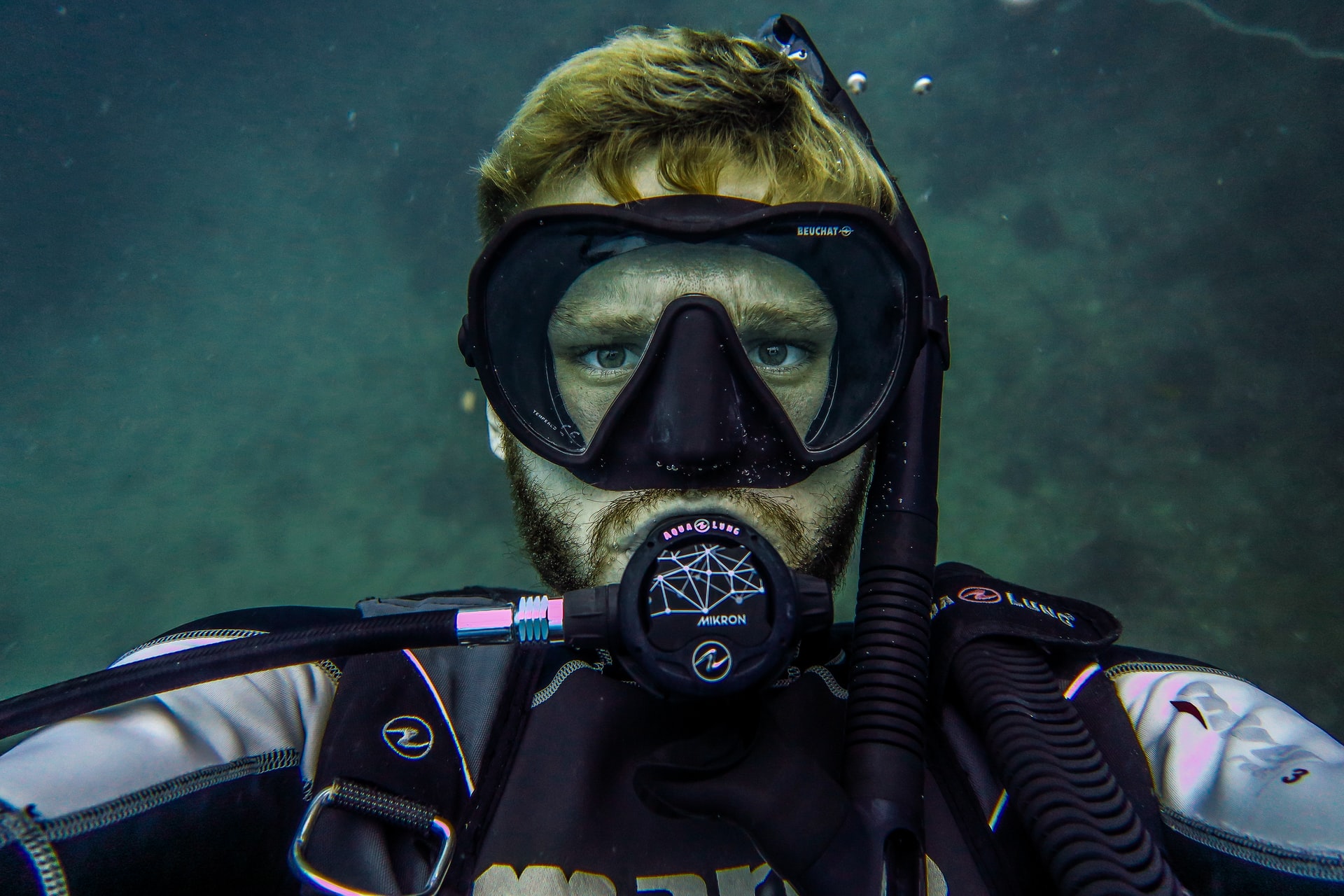
Should I Shave Before Scuba Diving? Crucial Facts (+9 Helpful Tips)
-
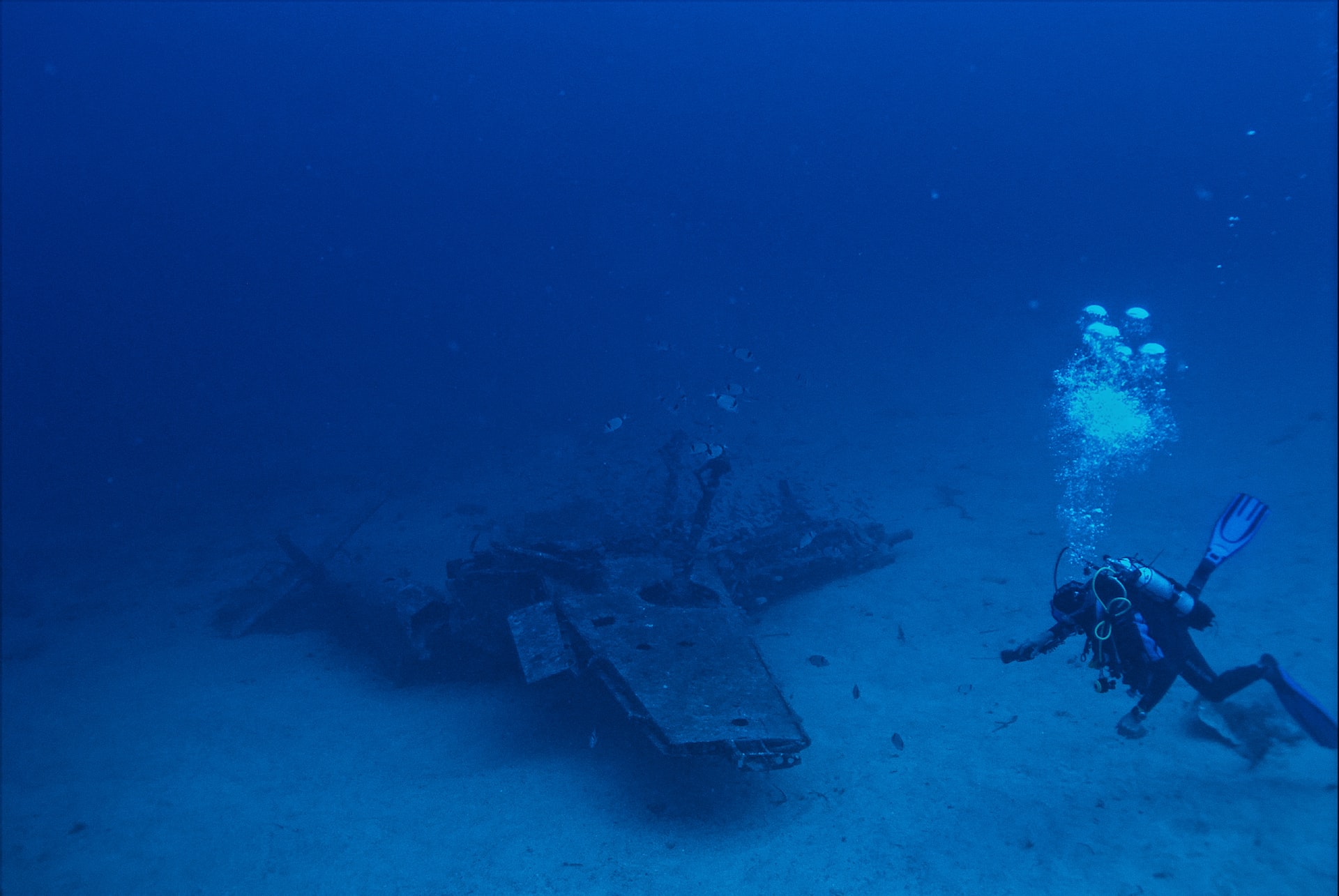
Why Do Scuba Divers Use Helium? (+Its Pros & Cons)
-
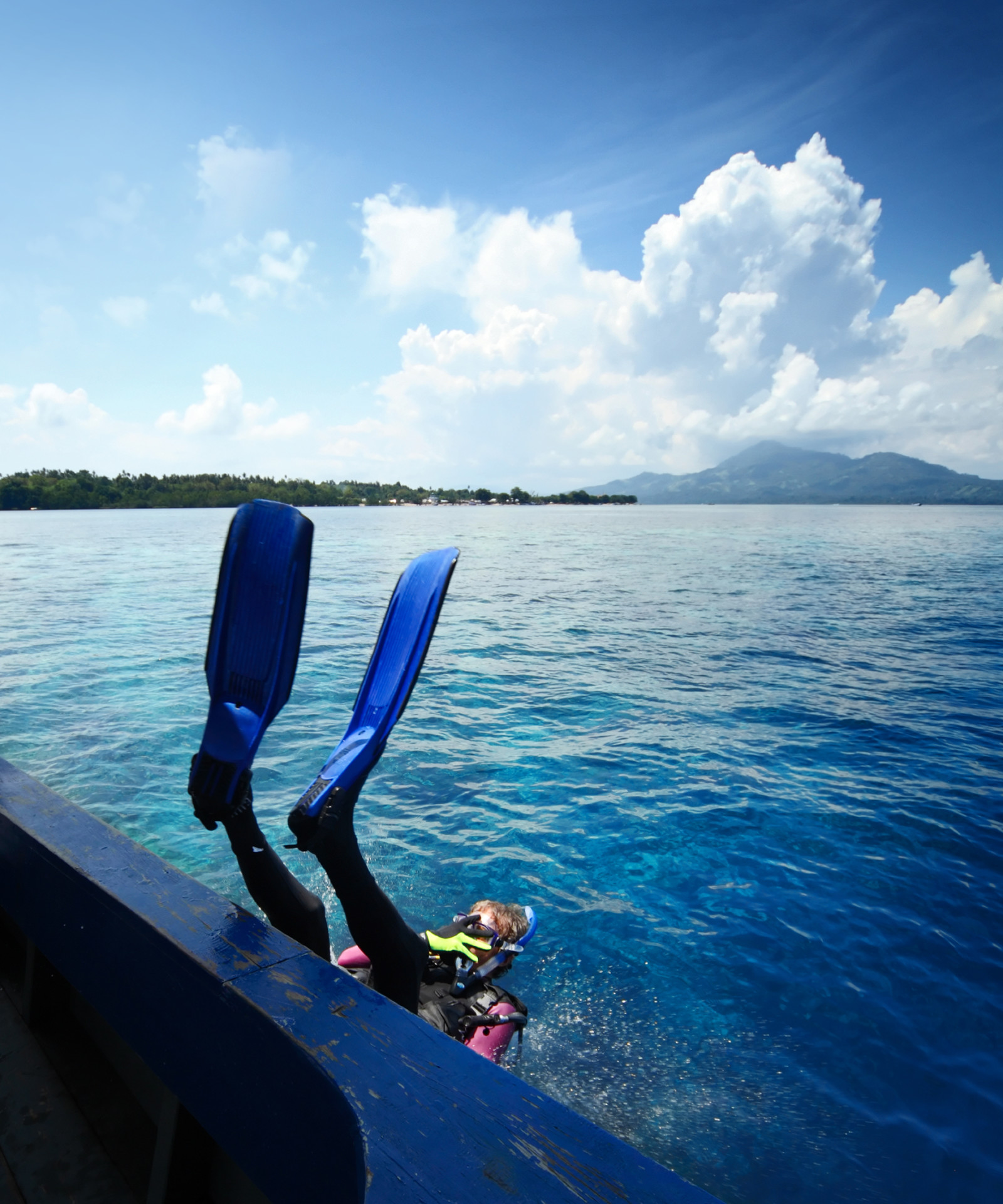
Why Do Scuba Divers Go in Backwards? (+3 Alternative Entries)
-
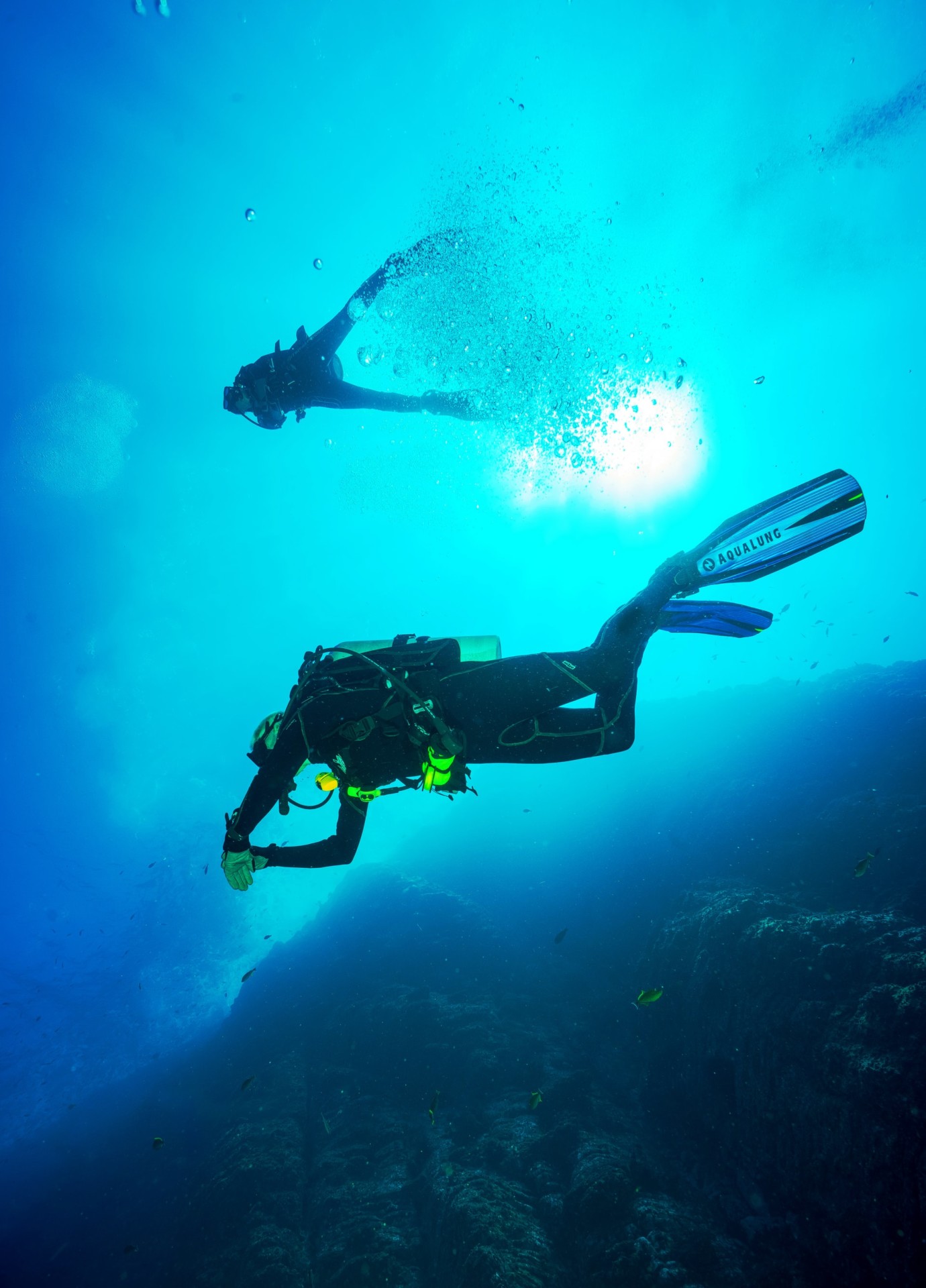
How Do Scuba Divers Sink and Float? (+Tips to Get It Right)









